I use a variety of containers in my garden, but over the years I’ve narrowed the types of containers I use at different stages of development.
Here are some common options for our trees and some of the reasons why we might want to use them at a given stage of their development.
Plastic containers
Anderson flats
Many great bonsai get their start in plastic pots. I use a special type of plastic pot known as an Anderson flat for sprouting seeds, rooting seedling-cuttings, or establishing roots on bare-root liners (young sprouted seedlings).
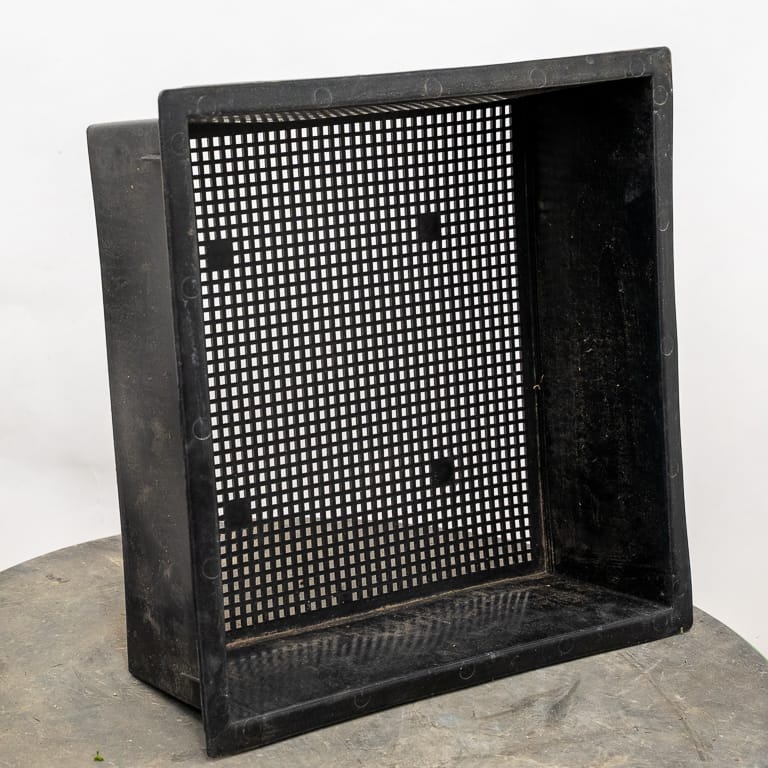
Anderson flat
Anderson flats are great because the bottom surface is mesh. The mesh supports increased air circulation and can reduce fungal problems in the roots.
Anderson flats are also a good option for field-grown or collected trees as the width to depth ratio is similar to what we find in bonsai containers.
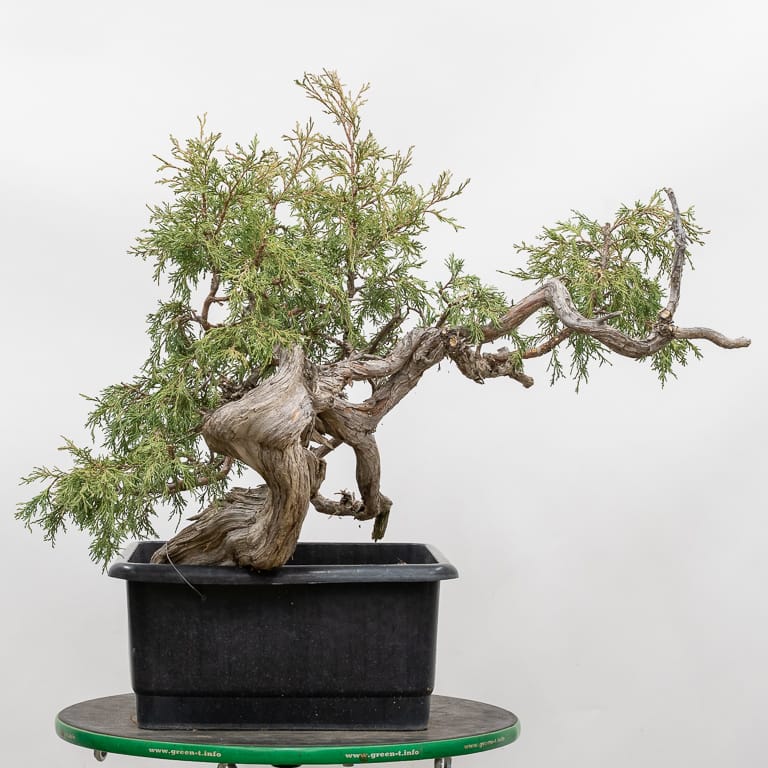
Rocky Mountain juniper in an Anderson Pot
Nursery pots
In general, I use plastic nursery containers for my youngest trees. Nursery containers are inexpensive, square or round, and can be flexible or sturdy.
When selecting nursery pots for young trees, my main criteria is whether or not they fit neatly into flats that will prevent them from falling over.
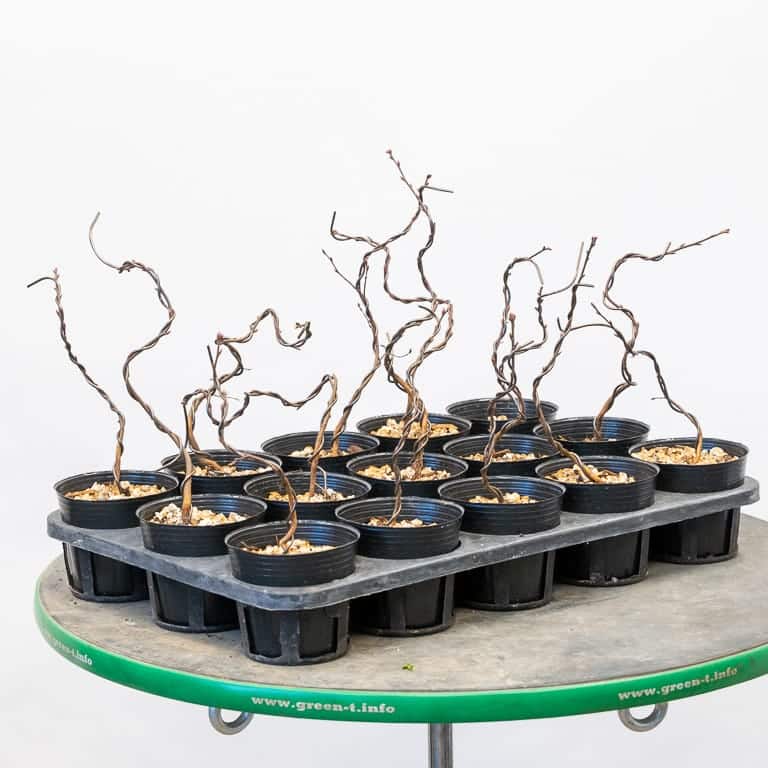
Hornbeam seedlings
Most nursery pots are deeper than they are wide, but this can be a good thing as young trees generally grow quickly and can benefit from the extra moisture that deeper containers offer.
Larger plastic containers are also good for trees in the early stages of trunk development or for trees that have recently been dug from the field.
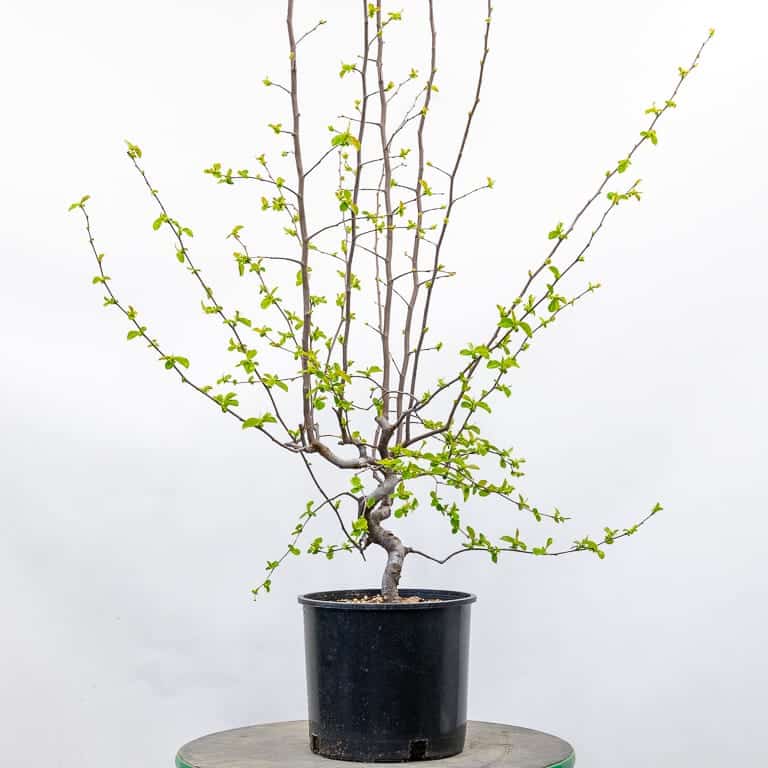
Container-grown Chinese quince
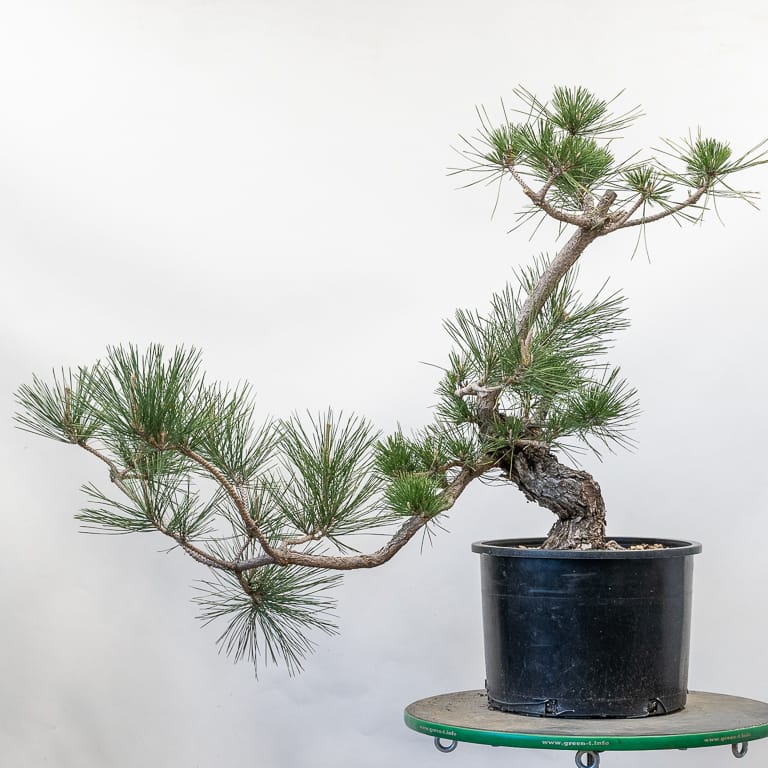
Field-grown Japanese black pine
Perforated containers
Some of my favorite options for developing trunks quickly are containers with lots of perforations. The best example of these are colanders.
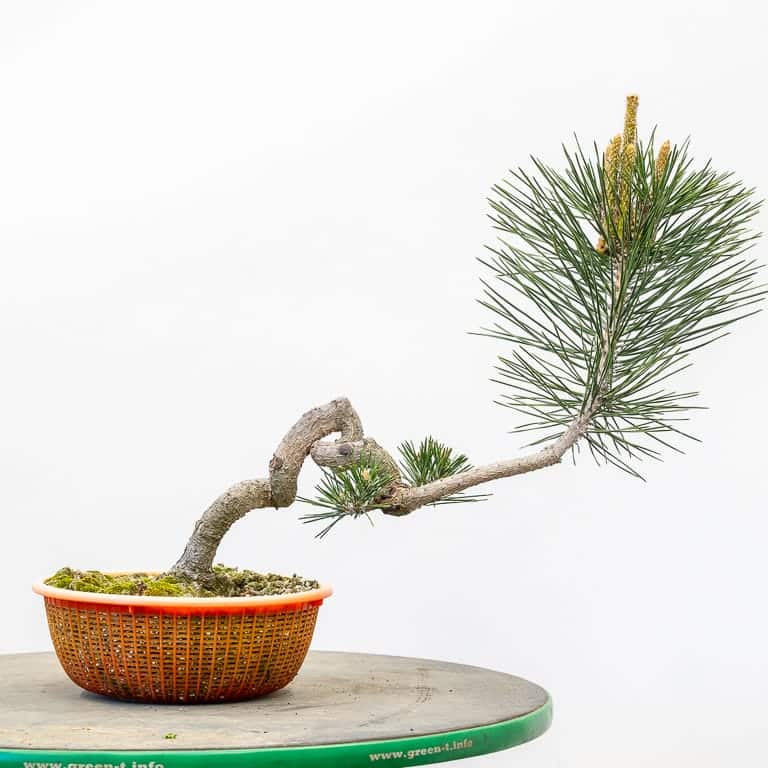
Black pine in a colander
Plastic colanders are inexpensive, shaped like bonsai pots, and easily available in Asian grocery stores or online kitchen supply stores. More importantly, they possess the same magic characteristic for developing great roots that Anderson flats have.
When a fine root reaches the side of a colander, the root tip dies. This causes increased lateral root development that makes colanders perfect for species like pine where ample fine roots near the base of the trunk help create the flared base we appreciate in pine bonsai.
Pond baskets are colander-like containers that offer the same benefits but come in different shapes.
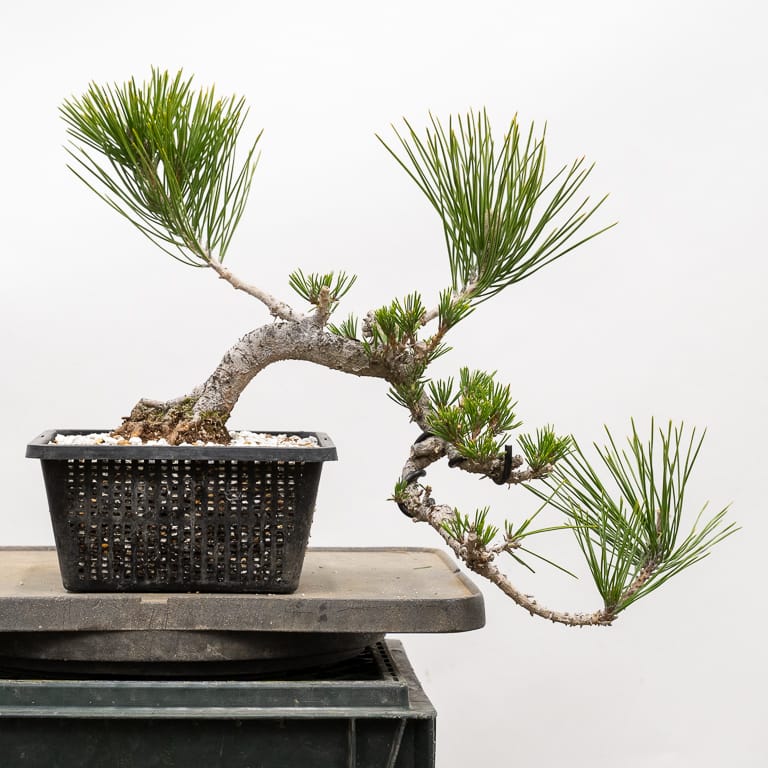
Black pine in a square pond basket
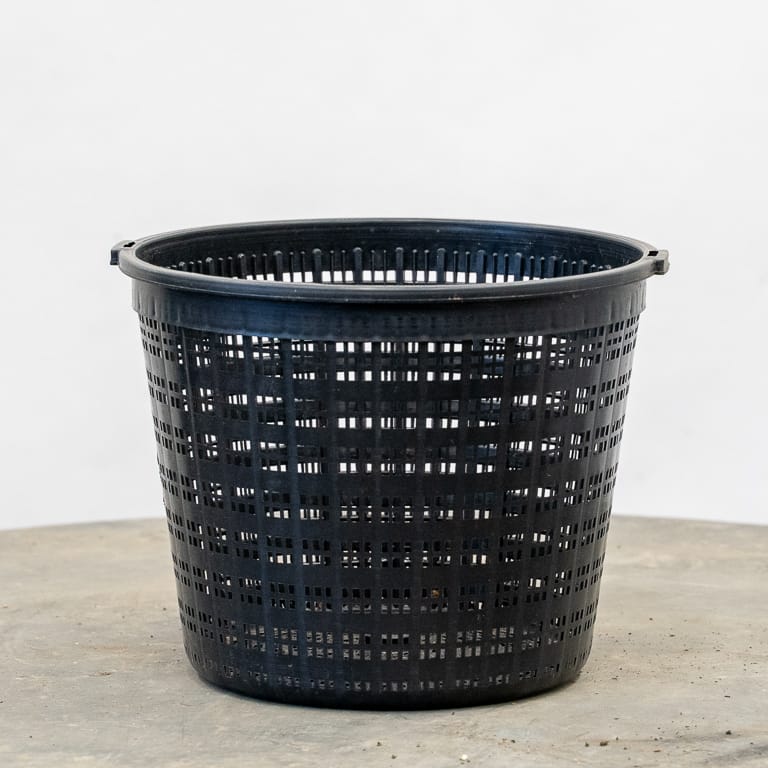
Round aquatic basket
The main benefit of pond baskets over colanders is that they last much longer. Colanders typically last two-to-three years in full sun whereas pond baskets can last five-to-ten years.
For trees in the later stages of development, I move away from plastic pots toward containers made from wood or clay.
Terra-cotta containers
Terra-cotta pots are a convenient option for a variety of uses. I use them for recently collected trees, trees that were bare-rooted, and trees that aren’t quite ready for their first bonsai pots.
The field-grown shimpaku below was planted in a large plastic pot when it came out of the ground. I used a terra-cotta pot for the tree last year as the roots don’t yet fit into a bonsai pot.
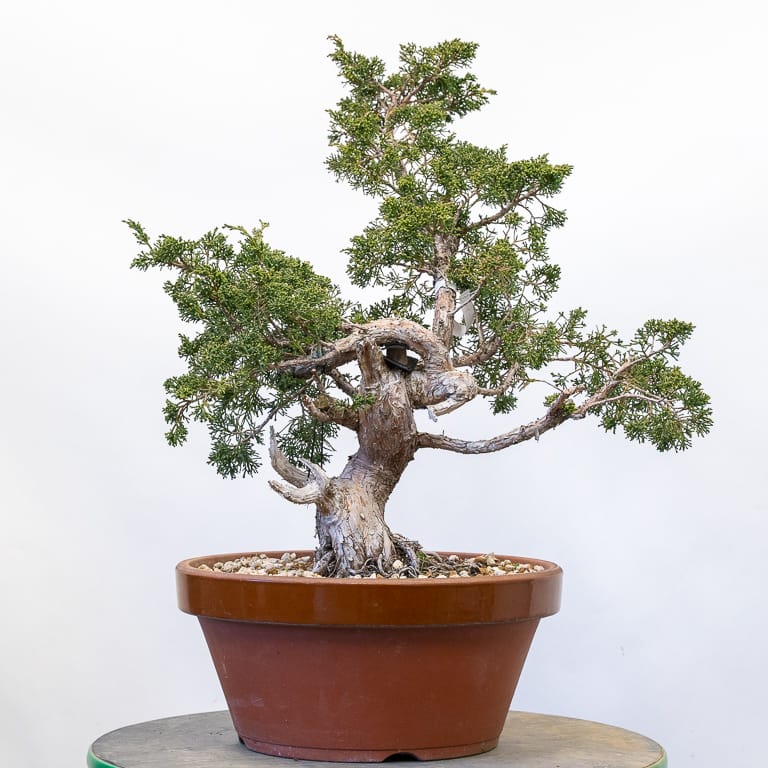
Kishu shimpaku
The juniper below is also a few years out of the ground. Its roots were compact so I was able to fit it into a much smaller container.
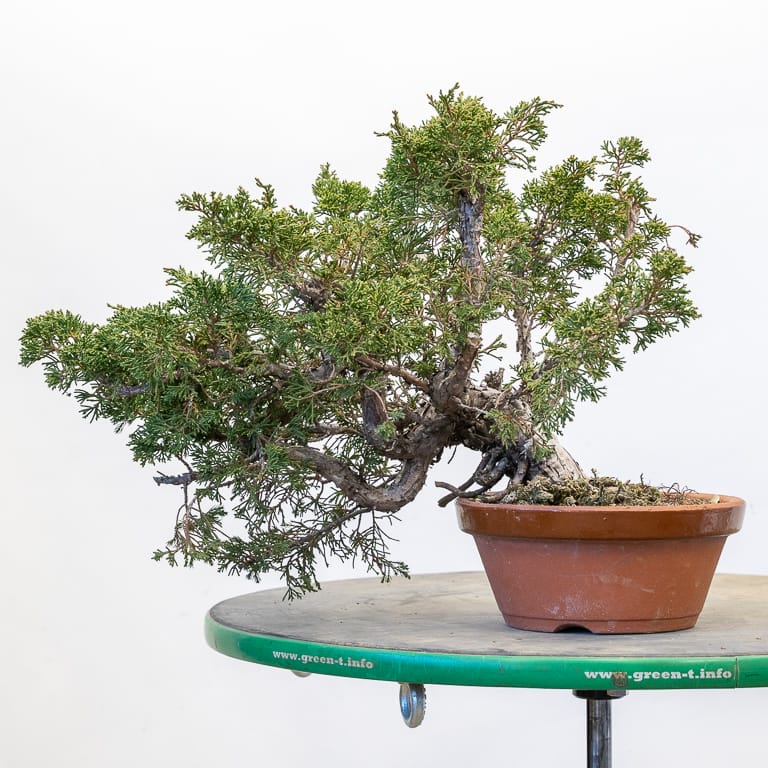
Future shohin itoigawa juniper
The proportions of terra-cotta pots are also a great fit for azaleas that have been bare-rooted. The extra depth provides moisture for the roots and gives them space to grow for the two-to-three years that’s needed for them to reestablish their roots.
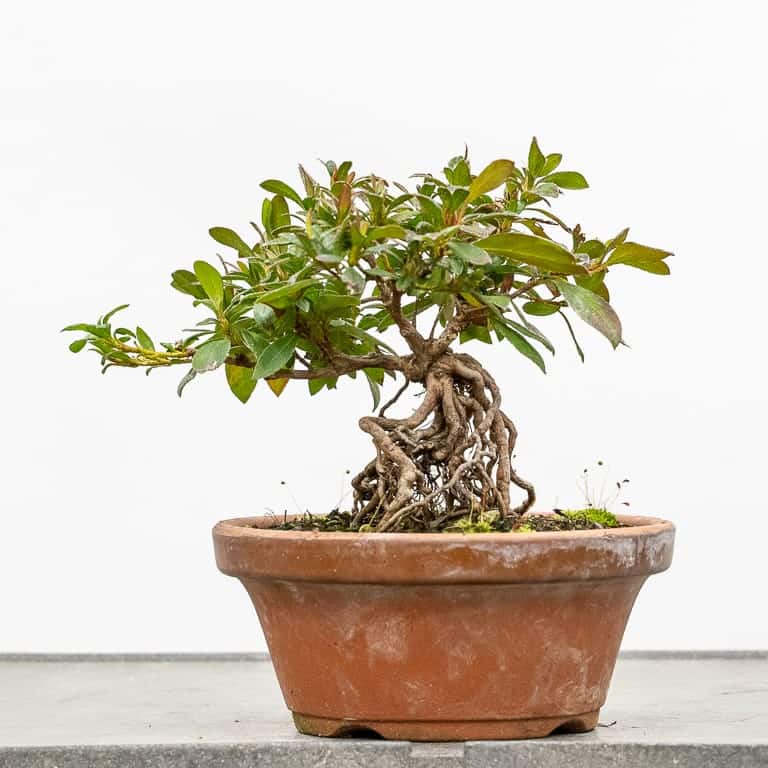
Exposed root satsuki azalea
Many of my pines move from colanders to terra-cotta pots once the trunks have reached the desired thickness and it’s time to focus on branch development.
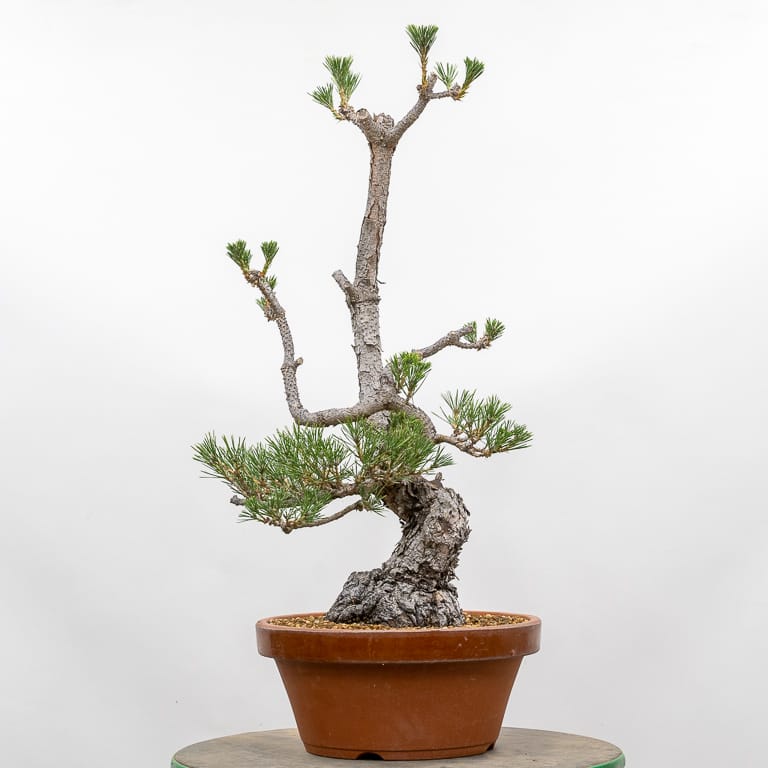
Black pine with sacrifice branches
Wood boxes
The primary benefit of wood boxes for bonsai is that we can create custom containers that are just the right size for our trees.
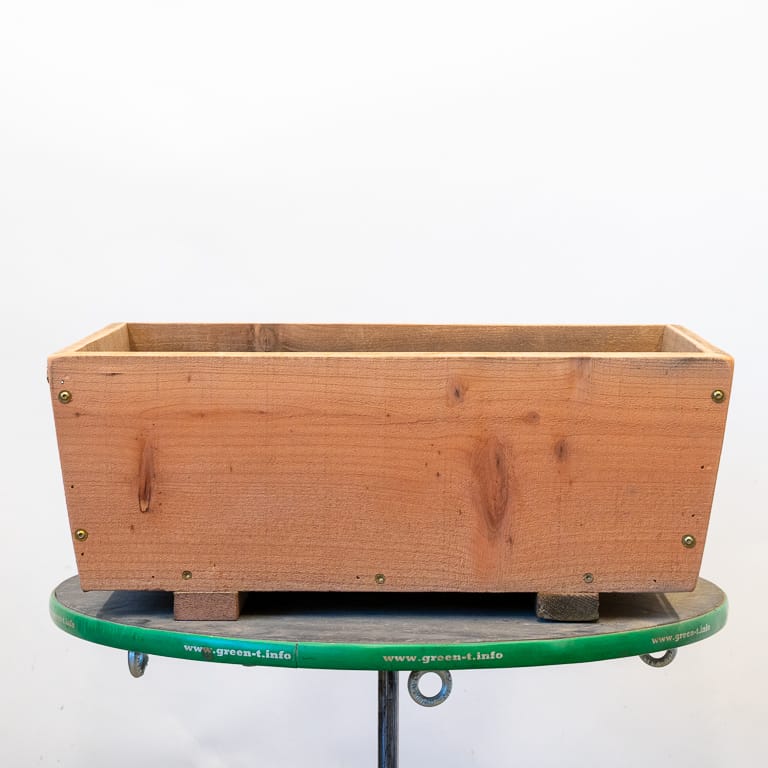
Redwood box (thanks, Dad!)
Deciduous species do well in low and wide containers that promote lateral root development.
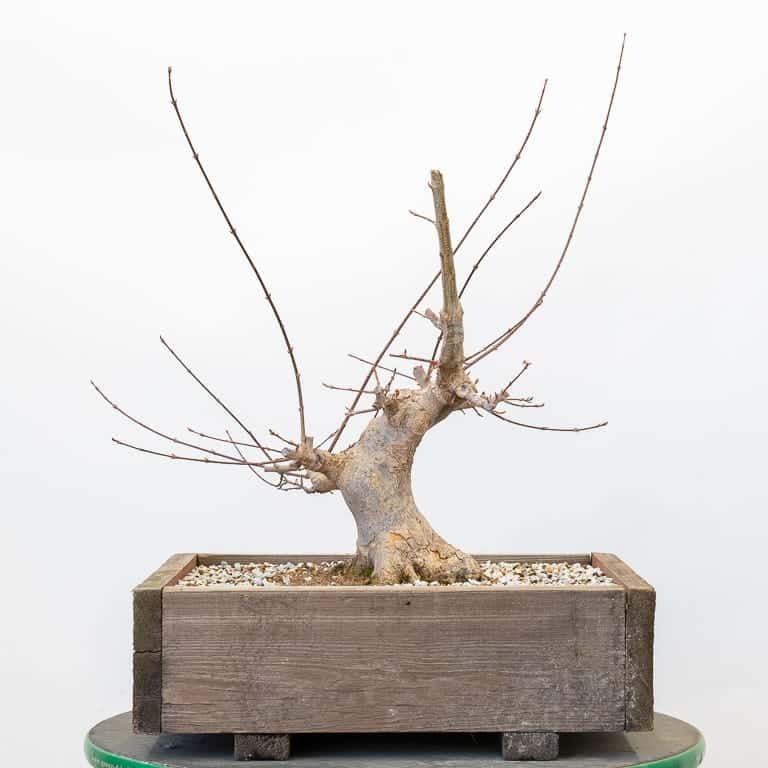
Field-grown trident maple in a wood box
Boxes are also a fantastic option for refined trees that have lost vigor. By creating a slightly larger box, we can give trees room to grow for a few years while they regain their vigor.
Bonsai pots
When I first move a tree into a bonsai pot, I usually select a container that’s inexpensive and/or slightly too big for the tree.
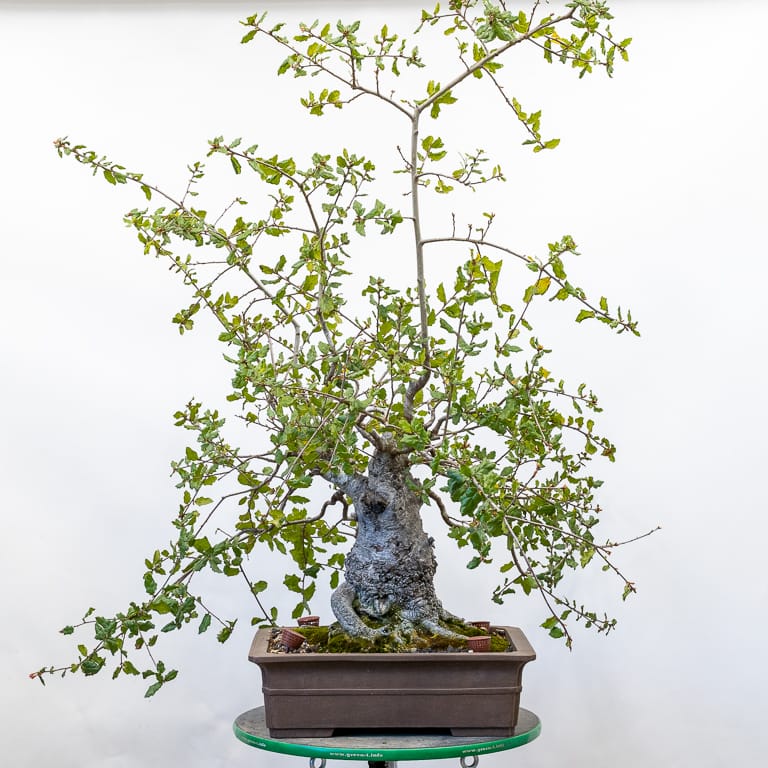
Coast live oak in an unglazed bonsai pot
I don’t worry too much at this stage about selecting quality containers or getting the style just right because I have no interest in showing the tree for several years. Once the branches are further refined, I’ll try to find the best available container for a given tree.
This is where the real fun begins. I’ve shared a number of posts featuring photos of different pots for the same tree in an effort to convey the effect a container can have on our perception of a tree (see “Pot selection exercises” for links to these posts).
This is also the aspect of container selection that gets the most attention, so for now I’ll note how satisfying it can be when you find the right container for a tree. Here are two examples where I have yet to find a perfect match.
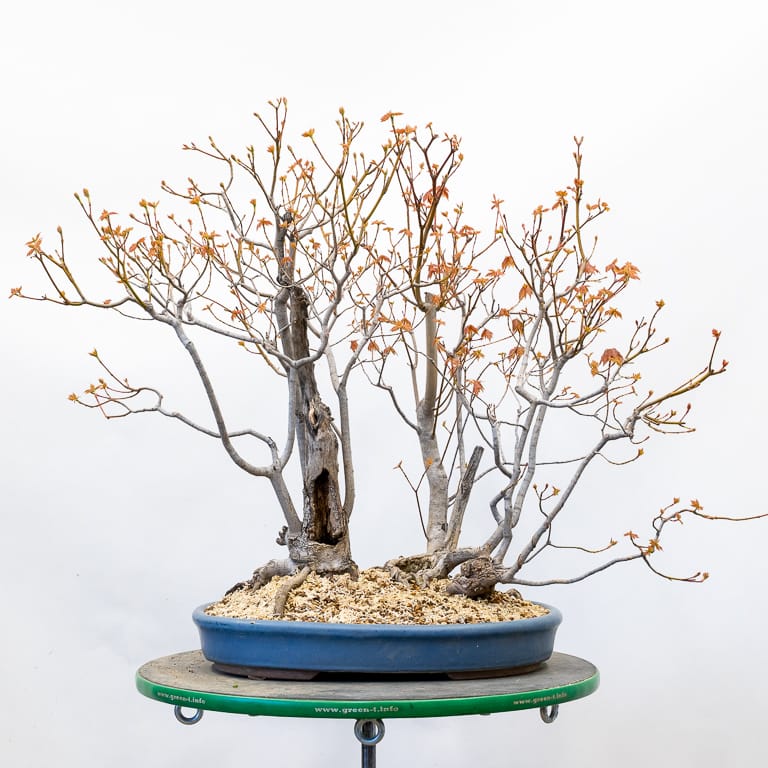
Red maple in a shallow blue oval
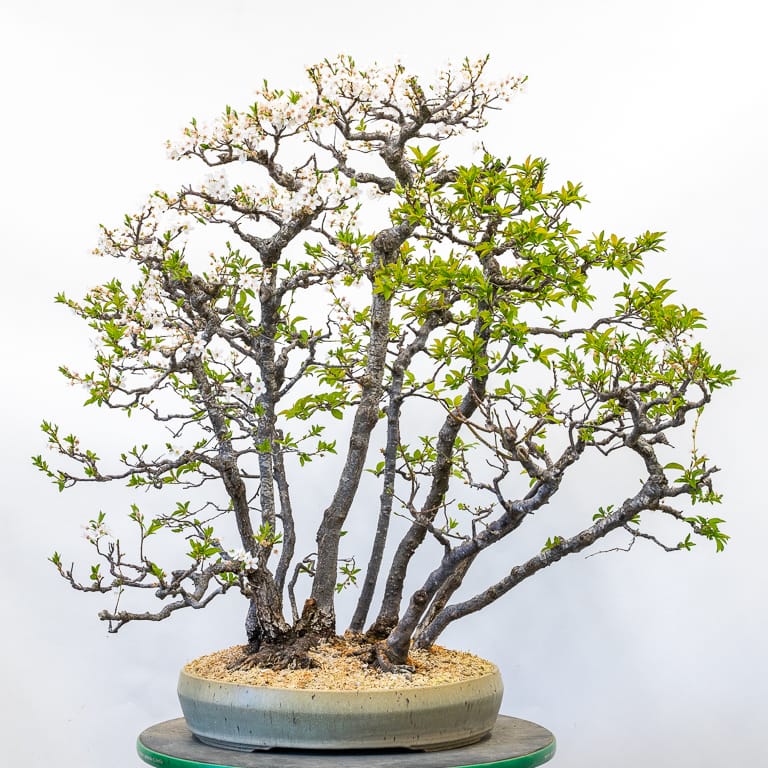
Plum group planting in an off-white oval with beveled sides
There is a lot more to say about bonsai containers. Please share any questions or suggestions you have for the topic in the comments below.
Thanks to Cheryl for suggesting the topic!
Bonsai Tonight Updates
- Check out the latest episode of the Bonsai Wire Podcast in which Michael Hagedorn, Andrew Robson, John Eads and I discuss all things repotting. It’s our most technically-focused episode yet.
- If your club is looking for a presentation on repotting bonsai, I’ve recently created a program in which I provide live narration to accompany video from the repotting of a mature beech forest. Feel free to call or write with any questions about the presentation.
